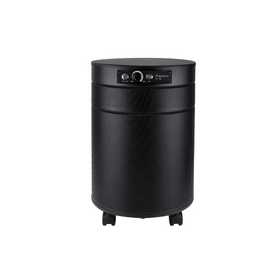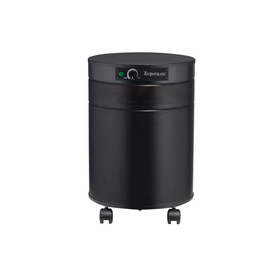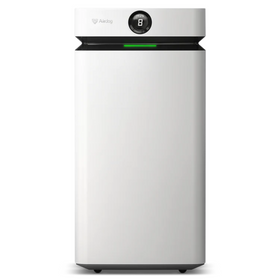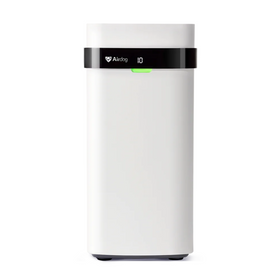
Let’s Clear The Air About Air Purifiers
Last Updated: Feb 23, 2025Just breathe. It's a familiar phrase right now, showing up on wall art, desktop reminders, and t-shirts. In an era where we spend most of our time inside, it is vital to monitor our indoor air quality. The Environmental Protection Agency (EPA) states that appliances like stoves, ovens, furnaces, dryers, fireplaces, water heaters, and air conditioners all contribute to indoor air pollution. Smoke from tobacco, pets fur and dander, chemicals in cleaning products, mold, and bacteria all cause poor indoor air quality. The EPA's Total Exposure Assessment Study reports that some indoor pollutant concentrations could be 2 to 5 times higher than outdoor levels.
Editor's Note: This article was originally published in February 2020. However, as we attempt to shield ourselves from the current COVID-19 Pandemic, using air purification technology can help protect us against the virus - as well as from all the above-mentioned risks to our indoor air quality. We are reissuing this article to help you better understand these useful products.
Table of Contents
- How Do I Know If I Need an Air Purifier?
- Is an Air Purifier Better Than a Humidifier?
- What Are Air Purifiers Good For?
- What Are High-Efficiency Particulate Air or HEPA Filters?
- What is Ozone Generator Air Purification?
- What Is Ultraviolet (UV) Light Air Purification
- What Is the Ionization Air Purification Method?
- What Is an Electrostatic Air Purifier?
- What Is an Activated Carbon Air Purifier?
- Can Air Purifiers Make You Sick?
- Other Things To Think About:
- What Size Room Can an Air Purifier Clean?
- Can You Run Your Air Purifier All Day?
- Do Air Purifiers Help You Sleep?
- Do Air Purifiers Really Work?
- What Else Can I Do to Purify the Air in My Home?

How Do I Know If I Need an Air Purifier?
Anyone who spends time inside, especially if you have asthma or allergies, can benefit from an air purifier. The typical air quality issues are mold, dust, pollen, smoke, smell, and bacteria. There are several products on the market to combat these concerns. Sometimes it can be hard to choose since each air purification system has a specific technology and purpose. In addition, the use and function of each product are not always clearly communicated to the consumer. So, it is essential to know your needs and be knowledgeable of purifiers on the market to find the right product.
Is an Air Purifier Better Than a Humidifier?
Air humidifiers, or dehumidifiers, cannot clean the air. They do not change the quality of the air when it comes to pollutants and airborne particles. Humidifiers solely help control the amount of evaporated water that is in the air. While adequately humid air can be more comfortable and can ease lung irritations, an air purifier is the only product that cleans the air.
What Are Air Purifiers Good For?
There are many different technologies employed to purify the air in your home, as you'll see below. Some filter particles, some kill bacteria and mold. In contrast, others help particles to fall to the ground for easy cleaning. Are you most concerned about dust, pet dander, and pollen? Do you have mold or bacteria that you need to remove? Is there smoke damage that needs to be addressed? It is essential to consider your needs to determine which type of air purifier is best for you.

What Are High-Efficiency Particulate Air or HEPA Filters?
HEPA filters are the most common air purifiers. They can remove 99.97% of particles that are 0.3 microns or larger - and yes, that includes COVID-19 virus particles. These filters can be installed in a home ventilation and air conditioning (HVAC) system, individual vents, or a portable unit. HEPA filters are very effective for large particles such as pollen, pet dander, dust, smog, smoke. However, HEPA filters only trap the particles: they do not kill bacteria or mold spores. HEPA filters do not capture volatile organic compounds, chemicals, paint fumes, viruses, pet odors, or molecules that have evaporated into the air in the air because they are too small. In addition, the filters need to be changed every 6 to 12 months or sooner in smaller units or areas with many indoor air quality concerns.
What Is Ultraviolet (UV) Light Air Purification
Ultraviolet (UV) lamps are an air purification method often found in combination with HEPA filters. Ultraviolet light is electromagnetic radiation that is released naturally from the sun. There are three types of UV lights. Most people have heard of UV-A and UV-B lights as they are commonly found in tanning beds. The third type of UV light is UV-C, and it is the type of light used in air purifiers. In this system, airborne particles are pulled into the filter and trapped. The air is then exposed to the UV-C light in a sealed purifying chamber and disinfected. The UV-C light will kill the majority, but not all, of bacteria or mold spores by disrupting and destroying the cells' nucleic acid and DNA. UV-C at high intensities could cause human harm. However, the lamps used in air purifying products are concealed within the system to prevent direct exposure.
You should be aware that some products release ozone if the UV lamp is not coated properly. Any product that emits ozone should be avoided altogether to limit the adverse health effects of ozone. Like all air purifiers, UV light cannot destroy pollutants that have already landed on a surface. For example, if mold has already taken hold and started to grow, an air purifier will not help treat the infected surface.

What Is the Ionization Air Purification Method?
Ionization is an air purification method that sends negatively charged ions into the air. These ions attach to airborne pollutants. The added weight from the ions that bond to the pollutants makes them too heavy to float in the air. The particles then drop from the air onto a surface. It is important to note that since air purifiers only remove particles from the air, anything that has settled on a surface needs to wiped or swept up manually. There has been some controversy on whether ionized air is healthy or harmful to humans. The confusion all started because the first ionic purifiers were coupled with ozone generators. The ozone produced by those generators was detrimental to humans, but the ionized air was not. While ionized air is not harmful to humans, it is one of the least effective air purifying methods.
What Is an Electrostatic Air Purifier?
Electrostatic air purifiers are a stronger, more intense version of ionizers. Industrial plants are the biggest users of electrostatic purifiers, but home units are available. This system uses static electrical charges that attract and trap particles. Instead of changing a filter like other air purifiers, wiping or washing parts, the system removes the trapped particles. Electrostatic air purifiers clean industrial fumes, steam, and gases to stop these pollutants from entering the atmosphere. While electrostatic systems are effective in removing common household and industrial air pollutants, there is a concern that during the process, the static charges can release harmful ozone. When using these types of air purifiers, it is crucial to be careful so that there is no exposure to any of the byproducts from the static charges.
What Is an Activated Carbon Air Purifier?
Activated carbon is highly efficient in removing odors, gases, and smoke from the air. Activated carbon uses charcoal to trap pollutants in its numerous carbon pores. The charcoal is "activated" because it treated with oxygen to open the carbon pores, giving them the ability to trap even more contaminants. While activated carbon is the "go-to" for smoke removal, it does not kill germs or trap other pollutants.
Can Air Purifiers Make You Sick?
The Environmental Protection Agency reports that ozone can decrease lung function, cause chest pain, worsen asthma, cause coughing, shortness of breath, throat irritation, and increased vulnerability to respiratory infections. The American Lung Association has stated that exposure to ozone is associated with premature death from respiratory failure, strokes, and cardiovascular complications.

Other Things To Think About:
What Size Room Can an Air Purifier Clean?
The Association of Home Appliance Manufacturers (AHAM) tests a product's effectiveness by cleaning smoke, pollen, and dust from the air. The results are recorded and listed as the Clean Air Delivery Rate (CADR) for that appliance. AHAM verified products are guaranteed to clean your air. However, they are only effective if the CADR range listed on the unit matches the room size. Many products come in a variety of sizes. To determine the correct size unit for your home, it is essential to match the square footage with the product's defined range. To find what CADR a room needs, do the following calculation:
CADR = Square Footage of the Room Divided by 1.55
For example, if an area is 200 square feet, the CADR would need to be 129 or above. Depending on the room size, some areas may require multiple products in separate spaces or just one unit in a central location. Built-in air purifiers in a home ventilation system are an easy way to clean all the circulating air in a home.
Can You Run Your Air Purifier All Day?
When it comes to the question of how long an air purifier should run, there is debate. What it all boils down is that the system should be running when there are pollutants present. However, there is a line between cleaning the air and wasting energy. But the fact of the matter is that pollutants are continually created so your machine should be working to fight them continually. The optimal solution is to have a system with an automatic sensor. When there are no pollutants registered, the machine will shut off and turn on again when they are detected. The auto sensor, combined with a manual shut off when one leaves, would be the most efficient.

Do Air Purifiers Help You Sleep?
On top of healthier lungs, air purifiers promote better sleep by removing dust, allergens, and other pollutants that can cause congestion.

Do Air Purifiers Really Work?
There are a variety of air purifiers on the market, and all of them work differently and are used for different reasons. It is essential to have the knowledge of what purifier you need to match your air quality concerns and goals so you can find out what will be best for you.

What Else Can I Do to Purify the Air in My Home?
In addition to an air purifier, you can improve your indoor air quality in many ways. Vacuuming regularly, using exhaust fans in the kitchen, bathroom, and laundry room, not smoking indoors, opening windows periodically, and reducing chemical cleaning product use will all help you in your quest for better air quality in your home. To learn more about your indoor air quality, visit Rise to read about air quality monitors, guides, and product recommendations.
Madeline Carlson
Madeline Carlson is a sustainable home consultant. She graduated from Eckerd College with a double major in Economics and Environmental Studies.











